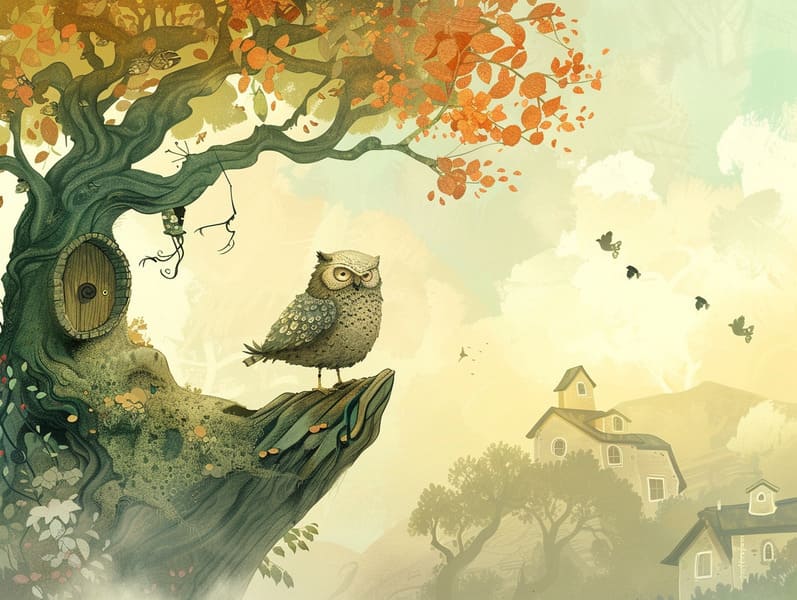Understanding the Legacy of Historical Fairy Tales and Its Eternal Appeal.
Understanding the Legacy of Historical Fairy Tales and Its Eternal Appeal.
Blog Article

Traditional fairy tales have old origins. These narratives have been recounted from one generation to the next long before they were ever documented. They sprang from a variety of civilizations, including Indigenous traditions. They were initially passed along among adults, often carrying themes and messages relevant to the societal norms and beliefs of the time.
The Brothers Grimm, Jacob and Wilhelm Grimm, were among the first to gather and publish many of these beloved narratives. Their collection, "Grimm's Fairy Stories," included stories like "The Story of Cinderella," "The Story of Hansel and Gretel," and "Snow White," which have since become classics in the world of children's fairy tales. Similarly, Hans Andersen's fanciful tales, such as "The Story of the Little Mermaid," and "The Little Duckling," have floated into hearts worldwide, solidifying their place in the pantheon of treasured fairy tales.
Despite their historical roots, traditional fairy tales remain as relevant as ever, especially as children's night stories. These charming stories are now available in numerous formats, including vividly illustrated books, charming animations, and digital fairy tales.
Their lasting presence can be attributed to several fascinating points:
Significant Morals: Timeless fairy tales often provide important moral lessons. Stories like "The Shepherd Boy and the Wolf" teach the benefit of truthfulness, while "The Story of the Tortoise and the Hare" illustrate the traits of resolve and humility. These narratives offer little ones clear distinctions between virtue and vice, developing their moral compass in a subtle yet meaningful way.
Empathy and Understanding: Classic fairy tales frequently include protagonists facing obstacles and hardships, urging listeners to connect with their struggles and champion their triumphs. For instance, "Beauty and Her Beast" teaches us the significance of valuing inner qualities to understand the real character of a person, strengthening awareness and discernment.
Cultural Recognition: Many ancient fairy tales are interwoven with the cultural contexts from which they grew. Immersing in these fairy tales can provide fascinating glimpses into different societies, cultivating a sense of world awareness and awareness.
Imagination and Innovation: The mythical elements in timeless fairy tales—talking beasts—spark children’s dreams. These tales lead readers to mythical realms, firing up imaginative thinking and a sense of delight that lasts a lifetime.
Classic fairy tales are not only charming but also illuminating. They serve as mesmerizing tools in advancing various mind and heart abilities in the young. When timeless fairy tales are spoken, they foster speech development by introducing new terms and meanings and complex sentence structures. This practice also nurtures listening skills and attentiveness, as young readers remain attentive, eager to see what happens next.
Furthermore, deliberating the themes and characters of classic fairy tales can advance cognitive skills and problem-solving abilities. Kids are educated to pinpoint patterns, anticipate outcomes, and figure out cause and effect. These conversations also help the young articulate their thoughts and feelings, enhancing their emotional intelligence.
In today’s technological age, the presence of digital storybooks has made these fairy tales more reachable than ever. Digital sites and online apps present extensive collections of classic fairy tales that can be accessed or listened via anytime, anywhere. Fairy tales spoken are particularly prevalent, sharing an charming way for awesome site young ones to delight in these captivating stories. Spoken stories and read-out-loud videos carry characters and settings to life, often joined by entrancing music and soundtracks that enhance the story journey.
The timeless allure of old fairy tales lies in their ability to evolve to today's society while continuing with their central values. Contemporary reinterpretations of these tales often present more different figures and modern settings, making them pertinent to today’s audience. However, the core values of bravery, empathy, and truth remain unchanged, continuing to strike a chord with young listeners of all ages.
Traditional fairy tales also offer a sense of comfort and recognition. They afford a orderly narrative with a straightforward beginning, middle, and end, often finishing with the termination of conflicts and the triumph of justice over injustice. This consistency can be encouraging for little ones, extending a sense of solidity in an ever-changing world.
Timeless fairy tales continue to bewitch and teach new generations, maintaining their beauty and relevance in modern society. As kids' bedtime tales, they bestow a perfect blend of magic and knowledge, sustaining moral values, empathy, and creativity. The accessibility of digital fairy tales and the in demand status of fairy tales told out loud make sure that these timeless narratives remain attainable to new generations.
By holding onto and making known these stories, we continue to admire the rich tapestry of mythology and cultural heritage. Whether you are reading a artistically illustrated book, seeing a online collection, or listening via an sound book, the mystique of classic fairy tales is always within reach. These narratives point out of the consistent impact of tales and its ability to connect us across eras and regions.
No matter if you are seeing a richly illustrated book, experiencing a virtual library, or playing an read-aloud book, the grace of popular fairy tales is always within reach.
These stories remind us of the consistent power of storytelling and its ability to bring us together across epochs and places, creating a bond that captivates and teaches alike.